Archaeological Institute of America
Deadline: September 15, 2025
The Martha and Artemis Joukowsky Distinguished Service Award is to be granted to those AIA members who, through their sustained and exceptional volunteer efforts, have furthered the work of the Institute and increased public awareness regarding its mission. Nominees for this award should have provided exceptional service to the Institute at the national level or at both the national and the local level. Trustees currently serving on the Governing Board are ineligible to receive this award. Up to but no more than two awards, in the form of a framed citation, will be presented each year at the Annual Meeting of the AIA.
Note: The name was changed from the Distinguished Service Award to the Martha and Artemis Joukowsky Distinguished Service Award at the December 1997 Annual Meeting of the AIA.
Nomination Process
Completed nominations, in the form of at least two but no more than three letters of recommendation detailing the candidate’s service on behalf of the AIA, should be submitted by the award deadline to the email address listed below.
Notifications Procedure
The committee will review nominations and make a decision by October. This decision then needs to be approved by the AIA’s Governing Board. In November, AIA Staff will contact all nominators regarding the status of their nomination. The winner will be celebrated at the Awards Ceremony in January.
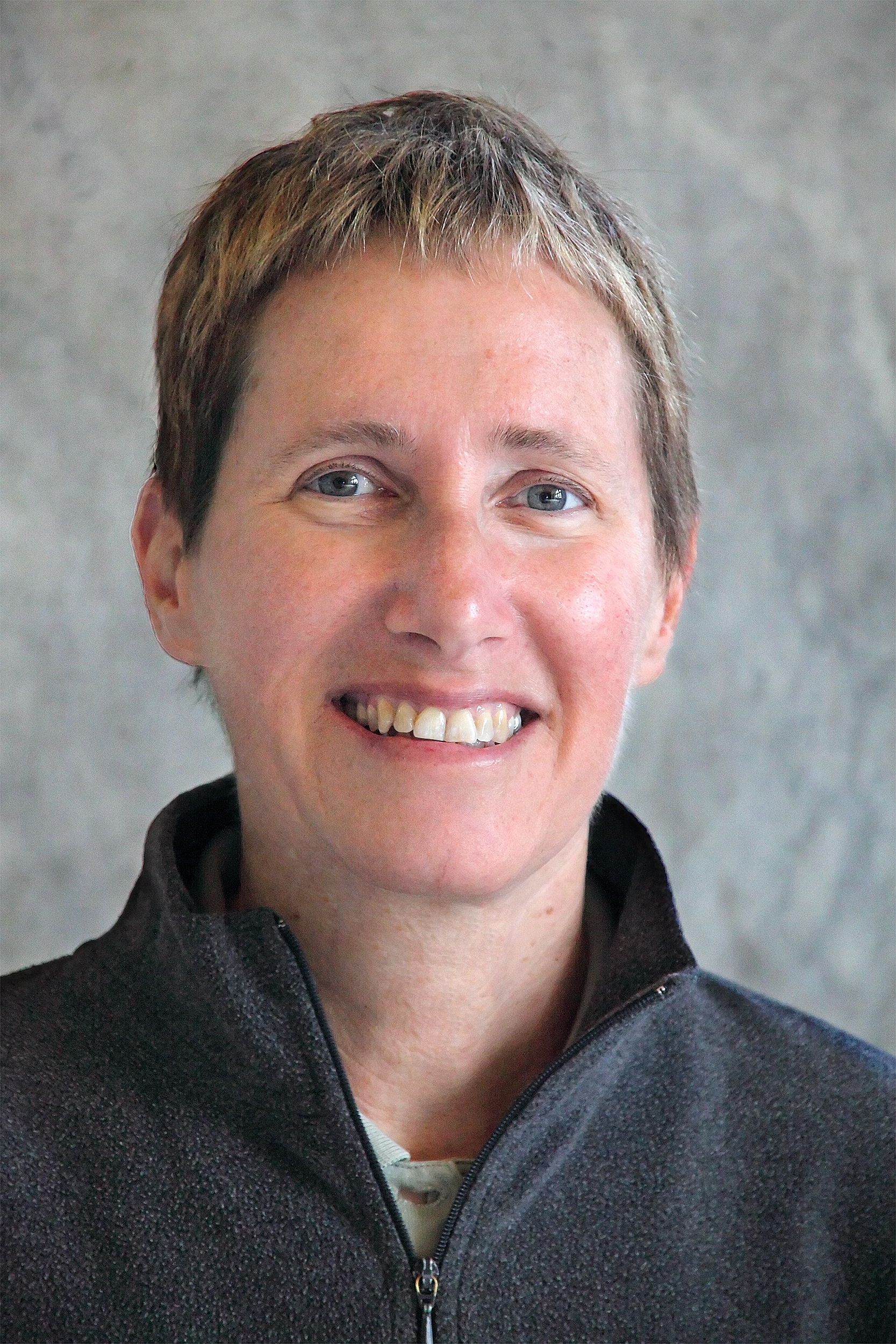
2025
The Archaeological Institute of America is pleased to present the 2025 Martha and Artemis Joukowsky Distinguished Service Award to Dr. Jodi Magness, the Kenan Distinguished Professor for Teaching Excellence in Early Judaism at the University of North Carolina, Chapel Hill. Dr. Magness has a decades-long history of service to the AIA at the local and national levels. At the local level she served as President of the Boston Society from 1996 to 2000 and as President of the North Carolina (Triangle Area) Society from 2003 to 2004. Her service at the national level is outstanding, serving as an Academic Trustee of the Institute (1998 to 2003) and, from 1994 to 2010, as a member or chair of nine separate committees or subcommittees and one task force. Additionally, she has participated as a speaker or organizer of numerous AIA programs, lectures, and colloquia. From 2017 to 2020 she served as President of the AIA.
As a prolific archaeologist and award-winning scholar, Dr. Magness embodies the high professional standards of the AIA. She has participated in 20 different excavations in Israel and Greece, including codirecting the 1995 excavations of the Roman Siege Works at Masada. From 2003 to 2007 she codirected the excavations of the Late Roman fort at Yotvata, Israel. Since 2011 she has directed excavations at Huqoq, Israel. She has written numerous books and articles, three of which have won awards: The Archaeology of Qumran and the Dead Sea Scrolls won the 2003 Biblical Archaeology Society’s award for Best Popular Book in Archaeology; The Archaeology of Early Islamic Settlement in Palestine was awarded the 2006 Irene Levi Sala Book Prize in the category of nonfiction on the archaeology of Israel; and Masada from Jewish Revolt to Modern Myth was selected as a finalist for the National Jewish Book Award in the category of history. Based on her many contributions to both the AIA and the discipline of archaeology, the AIA is delighted to bestow this year’s Martha and Artemis Joukowsky Distinguished Service Award on Dr. Jodi Magness.
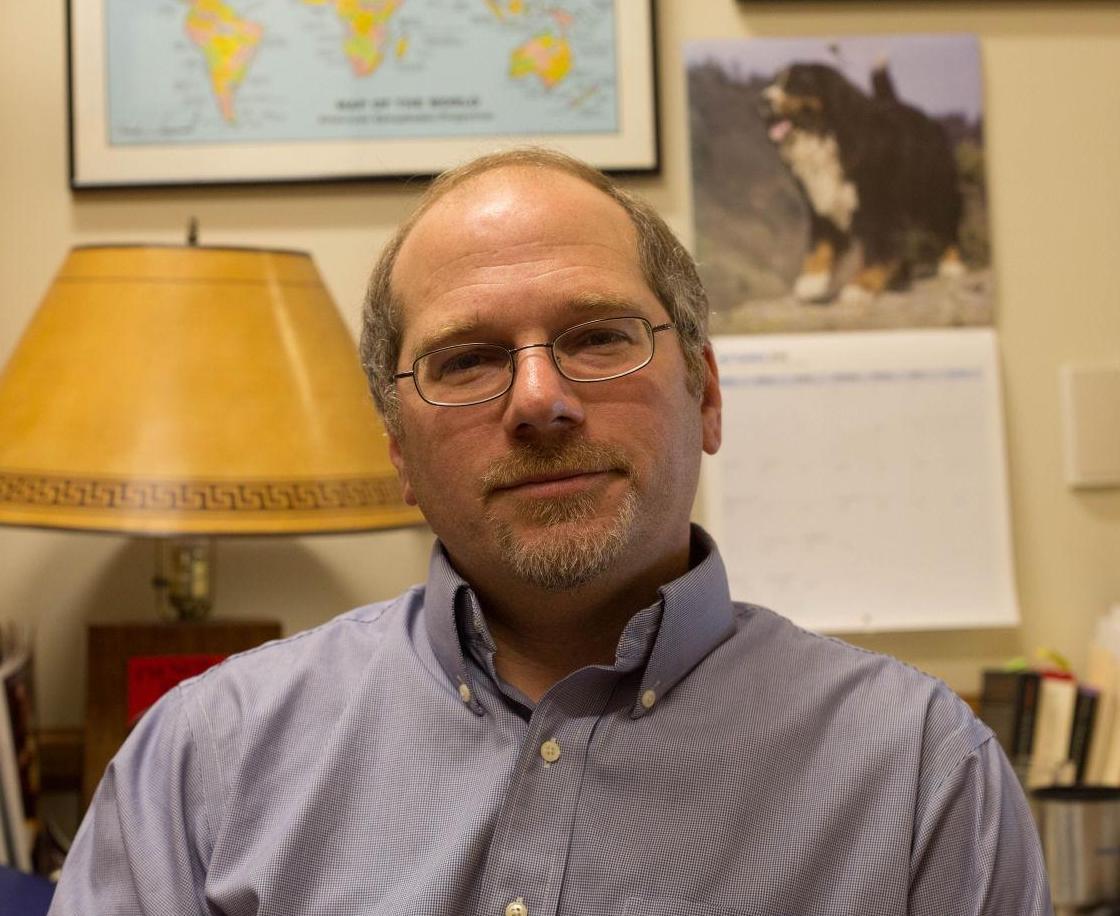
2024
The Archaeological Institute of America is pleased to present one of two 2024 Martha and Artemis Joukowsky Distinguished Service Awards to Dr. Andrew Goldman.
Dr. Goldman has been a dedicated officer of the AIA-Spokane Society since 2006, serving as president for many years. Under Dr. Goldman’s leadership, the Spokane Society, working closely with local organizations and museums, particularly the Northwest Museum of Arts and Culture (MAC), has been one of AIA’s most active Societies, holding a full slate of lectures, both national and local, as well as public events for a wide audience each year to provide rich educational opportunities for its members and city.
Speaking briefly on his involvement at the national level, Dr. Goldman himself has been a valuable speaker for the AIA’s National Lecture Program for over a decade, presenting some three dozen lectures. He has held several of the AIA’s prestigious named lectureships—the Matson Lectureship, the Kershaw Lectureship, and the Braidwood and Mellink Lectures—to name just a few.
On the local level, Dr. Goldman’s contributions particularly stand out, especially during a difficult period for the entire country. Beginning in March 2020, when the whole country shut down because of the Covid-19 pandemic, the AIA cancelled its remaining lectures for the rest of the season and most Local Societies followed. Under Dr. Goldman’s leadership, the Spokane Society took a different approach—one that became a model for future programming by the Institute.
The AIA-Spokane Society had a full spring program comprised of six talks during March and April, including a National Lecture, planned in conjunction with Pompeii: The Immortal City, a traveling exhibit at the Northwest MAC. Instead of cancelling this program when the museum had to close, Dr. Goldman and his Society decided to shift it online and make it open to all. Dr. Goldman and his officers worked with the speakers to organize the lectures as live webinars—and for the one speaker who could not do this, Dr. Goldman himself filled in. These first AIA live webinars were a rousing success, with each program attracting an audience of over 300. Almost all of the webinars were also recorded and shared on the AIA’s website and YouTube channel during the summer. To quote Dr. Goldman, “Pompeii was a disaster, but our lecture series needn’t be!” The March 2020 webinar by Eric Poehler was the very first National Lecture to be held online and the one spring 2020 lecture that did not have to be cancelled. The experience gained through this provided the model for AIA to follow in transitioning the National Lecture Program to an all-webinar series for 2021-22.
Dr. Andrew Goldman is richly deserving of a Martha and Artemis Joukowsky Distinguished Service Award for his dedication to the Archaeological Institute of America.
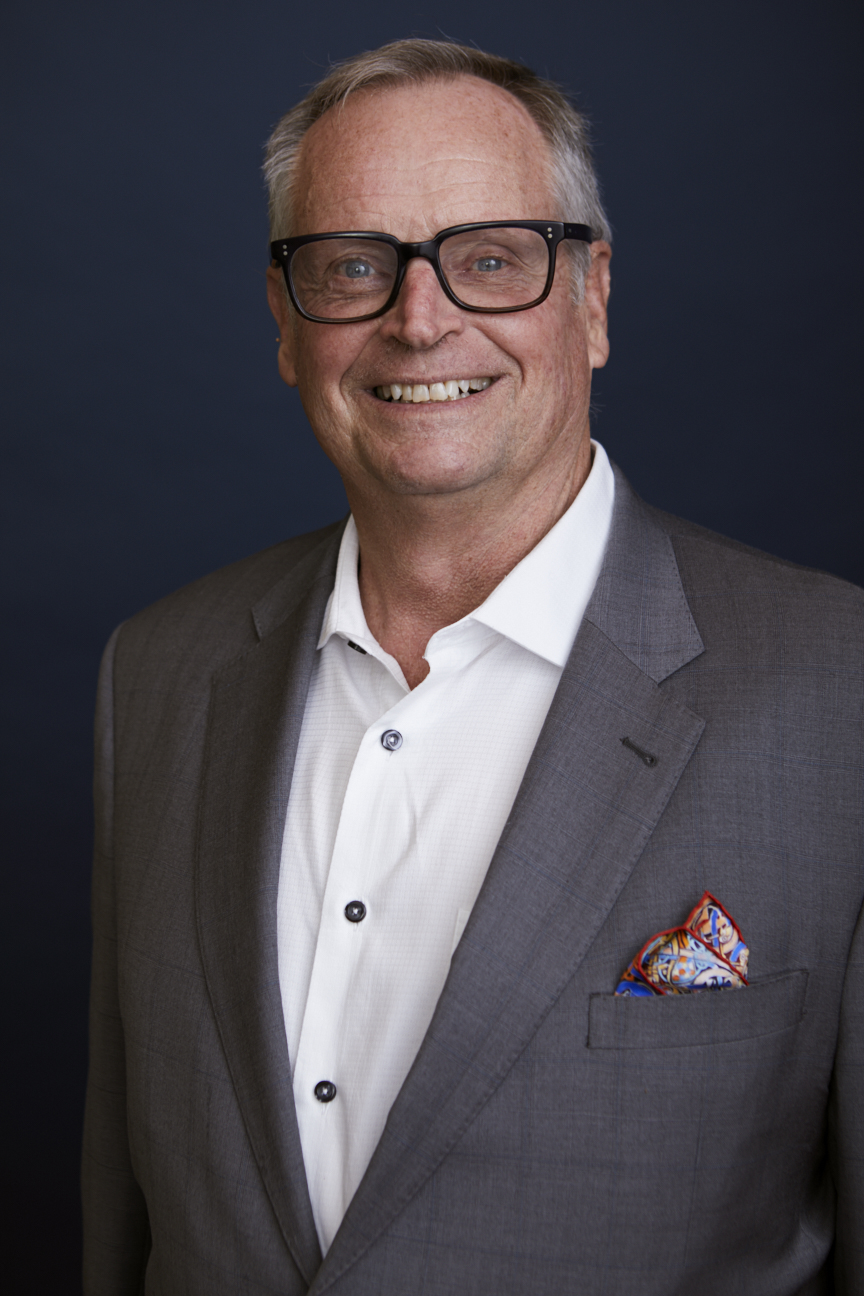
2024
The Archaeological Institute of America is pleased to present one of two 2024 Martha and Artemis Joukowsky Distinguished Service Awards to Mr. Charles Steinmetz.
Mr. Steinmetz has been active in the AIA at both the national and local levels for several decades. As a former General Trustee of the AIA (where he served on the Finance, Development, and Site Preservation Committees) and a current Trustee of the American School of Classical Studies at Athens, Mr. Steinmetz has long been at the forefront of promoting archaeology at various levels: in his Los Angeles County community, in the wider United States, and abroad. His example and encouragement have also attracted many of his friends and neighbors into supporting archaeology, whether at UCLA or through the AIA and its programs.
Archaeology is the lifeblood of Mr. Steinmetz and his entire family. For his own part, Mr. Steinmetz has assumed a leading role in furthering the importance and values of archaeology at UCLA. In his role as President and Director of the Steinmetz Foundation, he not only actively supports literacy programs in southern California, but also endows travel grants for undergraduate and graduate students at UCLA, the Institute for Field Research, and the AIA-Los Angeles County Society to enable students to participate in archaeological projects and study programs all over the world. All graduate student recipients of a Steinmetz archaeological travel award at UCLA are expected to lead an extra-curricular class on archaeology at the K-12 level, thus also introducing archaeology to a plethora of students in the greater LA Unified District. Most recently, Mr. Steinmetz launched the Steinmetz Archaeology Center near his home to host lectures and gatherings, such as the annual Garden Party for AIA members, that brings together students, teachers, and faculty from across southern California.
Mr. Steinmetz’s vision, energy, and leadership in education—especially through archaeology—is one of his defining characteristics, and he enthusiastically dedicates his financial resources and personal energies towards the benefit of archaeology. His devotion to the AIA-Los Angeles County Society for several decades has been singular, and he has actively promoted archaeology for the AIA locally and nationally for well over two decades.
Mr. Charles Steinmetz is richly deserving of a Martha and Artemis Joukowsky Distinguished Service Award for his dedication to the Archaeological Institute of America.
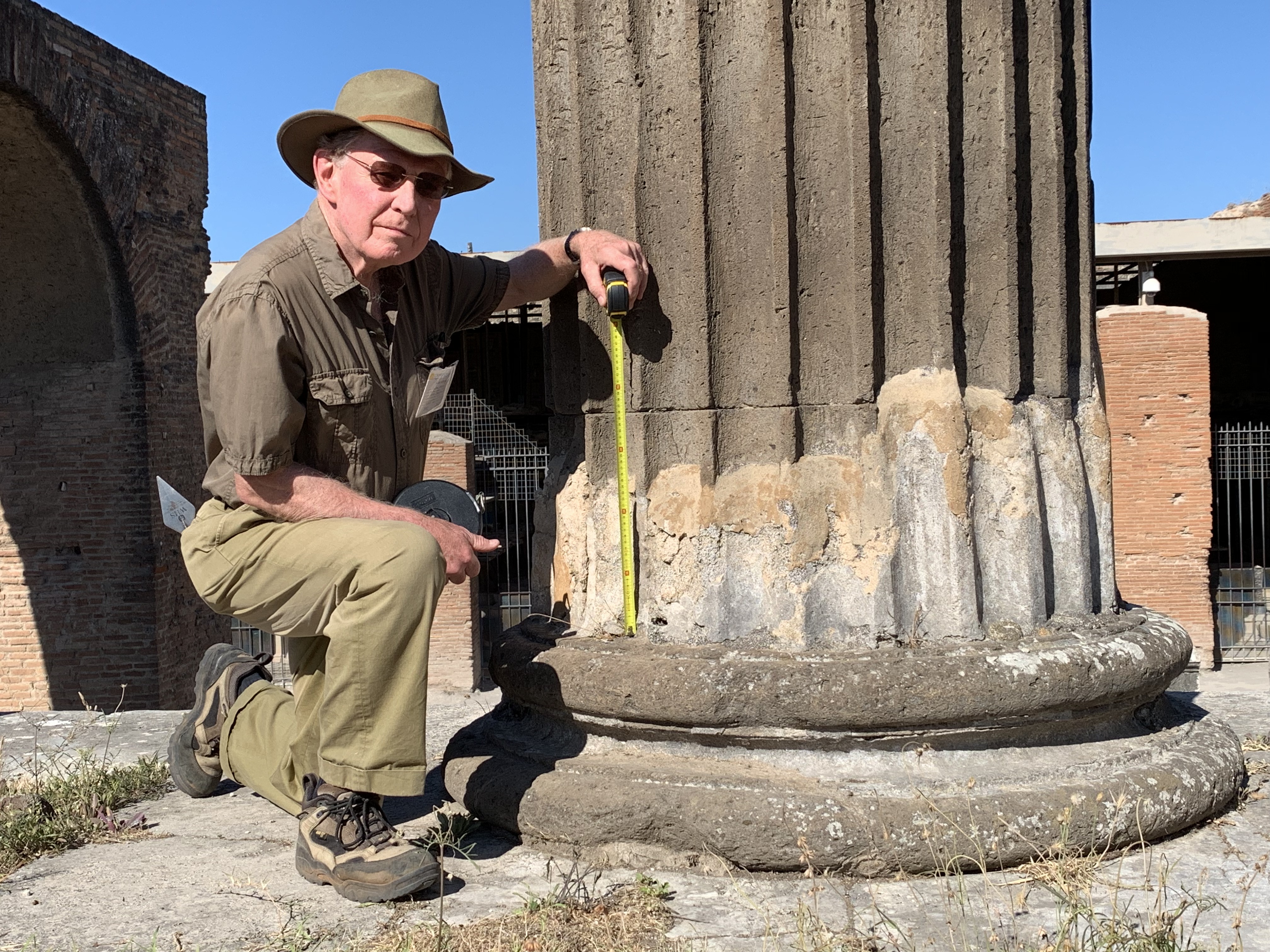
2023
The Archaeological Institute of America is pleased to present the 2023 Martha and Artemis Joukowsky Distinguished Service Award to Dr. John J. Dobbins.
For over forty years John Dobbins has served the AIA in many capacities. During his distinguished academic career at the University of Virginia he served as president of the Charlottesville Society for 37 years, offering a welcoming environment for AIA lecturers, providing generations of graduate students with the opportunity to interact meaningfully with important scholars in the field and creating fruitful links with the local community.
Dr. Dobbins himself has been a national AIA lecturer since 1982, holding over the years many of the AIA’s named lectureships, including the Martha Sharp Joukowsky Lectureship in 2007–2008. Dr. Dobbins has presented papers at AIA Annual Meetings, and his own research, especially through his Pompeii Forum Project and work on computer modeling on the houses of Roman Antioch, has served the wider AIA community.
Dr. John J. Dobbins is richly deserving of this year’s Martha and Artemis Joukowsky Award for his distinguished service to the Archaeological Institute of America.
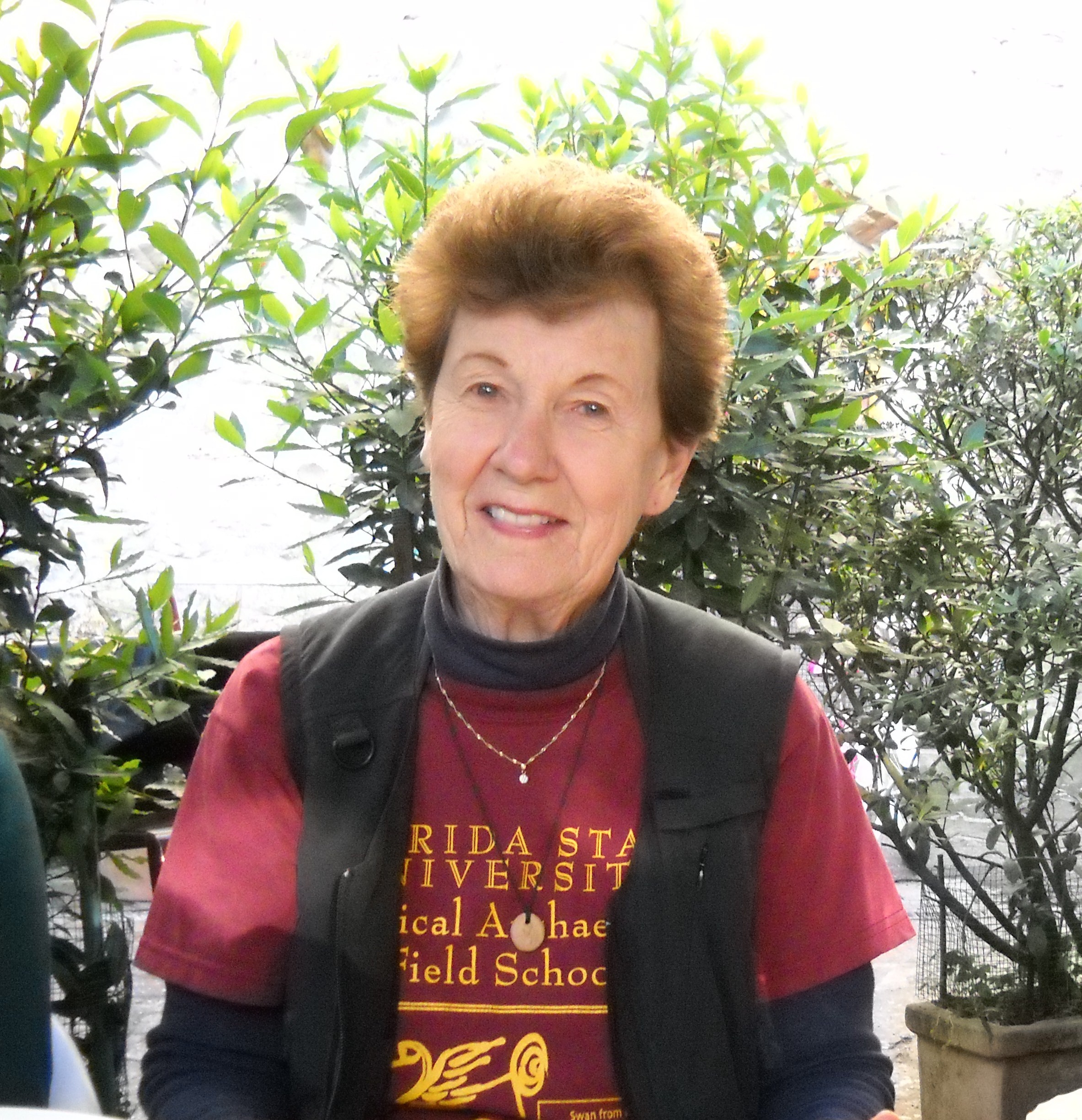
2022
The Archaeological Institute of America is pleased to present the 2022 Martha and Artemis Joukowsky Distinguished Service Award to Dr. Nancy de Grummond.
Dr. de Grummond’s active participation in the AIA began immediately following the completion of her Ph.D. in Art History at the University of North Carolina, Chapel Hill. She became a member of the Tallahassee Society in 1968, and has since served as that chapter’s President, Vice President, Secretary, Treasurer, and Program Director. With a grant from the AIA in 1976, she organized the first regional symposium of the Tallahassee Society called “What is Etruscan?” and published the proceedings in Archaeological News. That same year she founded the Florida State University Student Archaeology Club, a collaborating partner of the Tallahassee Society, which has helped to draw many FSU students to the study of archaeology. In 1985 she co-founded the AIA’s Gainesville Society.
Recently she has integrated her work as Director of Excavations at Cetamura del Chianti in Italy with archaeology in her local community including an exhibition on 3-D printing of archaeological artifacts from Cetamura that she organized for International Archaeology Day. She has shared the joy of touching and handling 3-D printed vases, cups, plates, and other ancient artifacts of everyday life with children from the Lighthouse of the Big Bend in Tallahassee, which serves children with visual disabilities.
Beyond her local service to the AIA, she has served on the AIA Governing Board and the Executive Committee. She has chaired the Gold Medal Committee twice and the Program for the Annual Meeting Committee, and she has served on numerous AIA Committees, including Nominating, Lecture, Archives, Publications and Publication Subvention. She co-hosted the 2012 AIA Gala in New York and in 2015 she was the recipient of the AIA Excellence in Undergraduate Teaching Award. Since 1978 and continuing to the present day, she has lectured to more than 57 local Societies across America and Canada, holding many of the AIA’s distinguished lectureships. Additionally, she served on the Editorial Board for ARCHAEOLOGY magazine and Dig Magazine. She has also been a peer referee for the American Journal of Archaeology for many years. Dr. Nancy de Grummond is richly deserving of this year’s Martha and Artemis Joukowsky Award for her distinguished service to the Archaeological Institute of America.
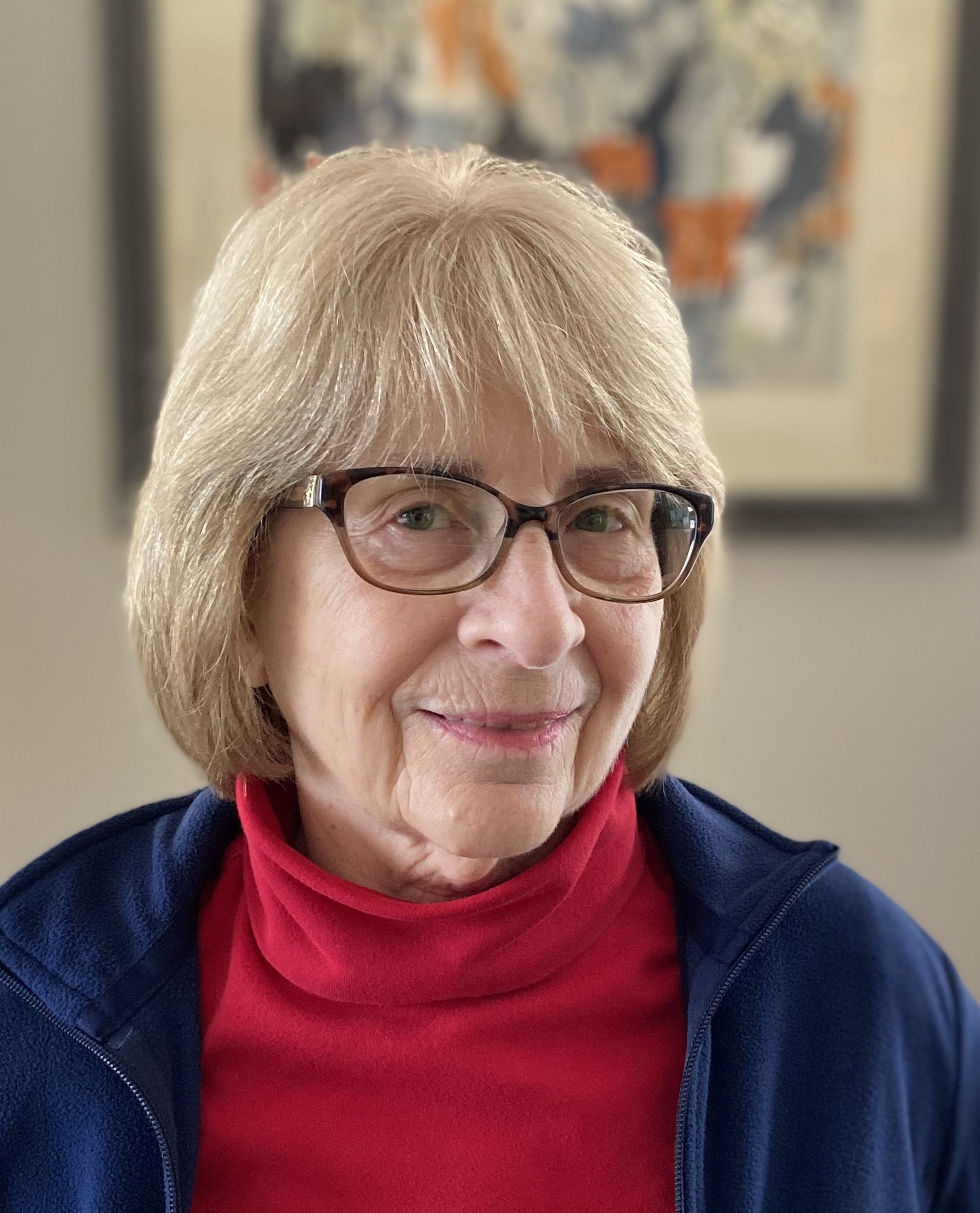
2021
The Archaeological Institute of America is pleased to present the 2021 Martha and Artemis Joukowsky Distinguished Service Award to Dr. Jane C. Waldbaum.
Dr. Waldbaum’s active participation in the AIA began immediately following the completion of her Ph.D. in Classical Archaeology at Harvard, when she served as Vice President of the AIA’s local Society in Boston, MA. She has been a member of the Board of Directors of the Milwaukee Society since 1974, serving as Vice President, Secretary, and President of the Society four times. She has worked collegially with other archaeologists and Society members to organize an annual Archaeology Fair with the Milwaukee Public Museum and more recently to create online member-participation events. Her leadership and hard work over four and a half decades have made the Milwaukee Society one of the AIA’s strongest Societies.
She has been equally active and effective at the national level. In 1993, Dr. Waldbaum was elected to the AIA’s Governing Board as an Academic Trustee, and in 1999 she was elected its First Vice President. Dr. Waldbaum served as President of the AIA with a high level of professional responsibility from 2003-2007. For more than 20 years, she has served on numerous AIA committees, chairing many of them.
There is no doubt that Dr. Jane Waldbaum is richly deserving of this year’s Martha and Artemis Joukowsky Distinguished Service Award.
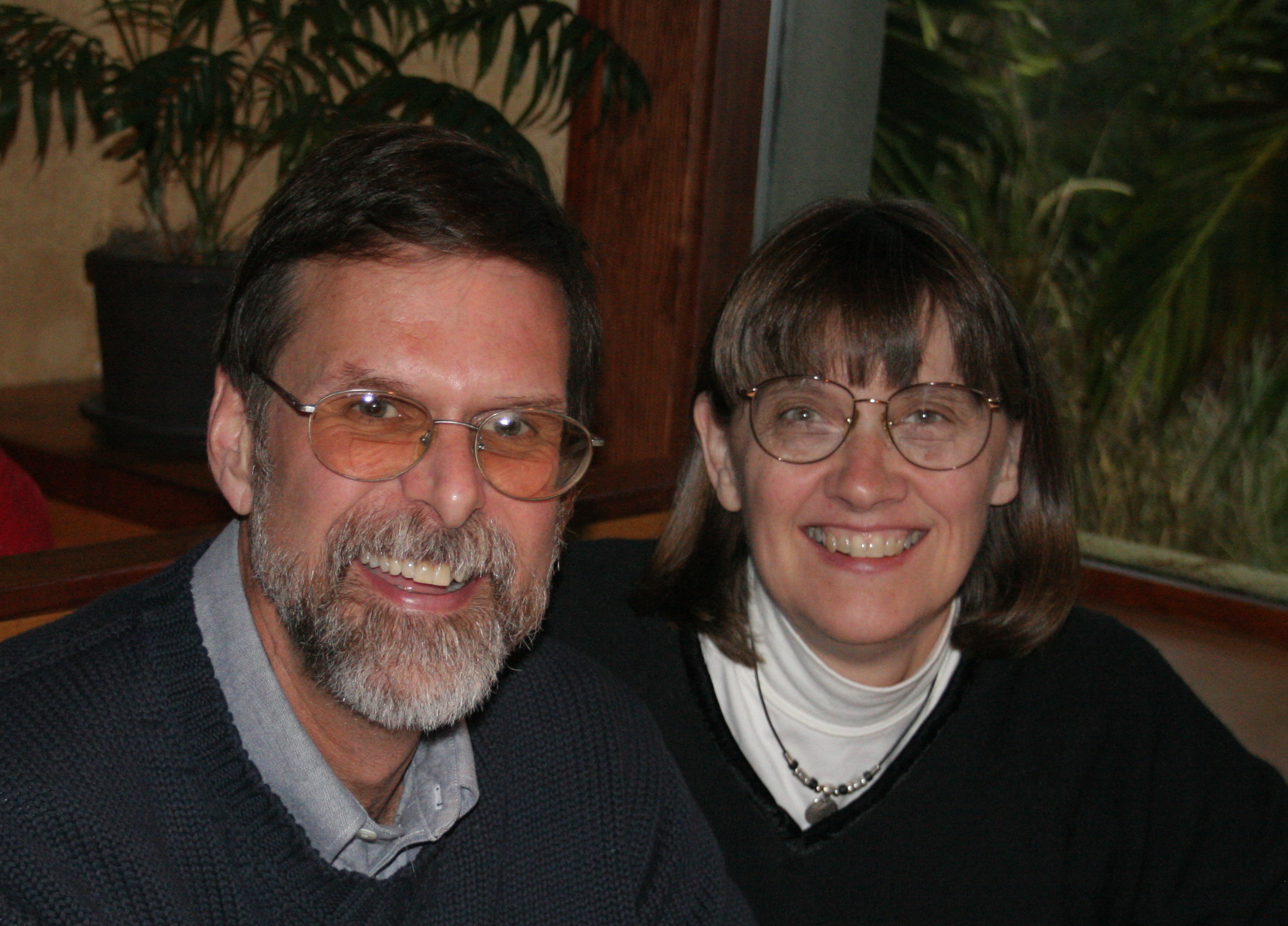
2020
The Archaeological Institute of America is pleased to present the 2020 Martha and Artemis Joukowsky Distinguished Service Award to Drs. William and Suzanne Murray.
Drs. William and Suzanne Murray founded the AIA’s Tampa Bay Society in 1989 and for 30 years, the Murrays have worked together as a team to serve as the President, Treasurer, Secretary and Program Coordinator of that Society. One or both of them met every lecturer at the airport and hosted more than half of them. They arranged lecture rooms, prepared flyers, handled publicity and coordinated receptions. During their tenure, the Tampa Bay Society received high evaluations from the lecturers, many of whom mentioned the attentive hospitality of the Murrays.
Drs. William and Suzanne Murray have contributed to the mission of the AIA beyond their outstanding work for the Tampa Bay Society. Dr. William Murray has participated in the AIA’s National Lecture Program since 1989 and was recently selected as the Martha Sharpe Joukowsky Lecturer for 2020-2021. Dr. Suzanne Murray served on the AIA Outreach and Education Committee. Together they served as AIA lecturers on more than five AIA Tours to the Mediterranean.
There is no doubt that Dr. William and Dr. Suzanne Murray are richly deserving of this year’s Martha and Artemis Joukowsky Distinguished Service Award.
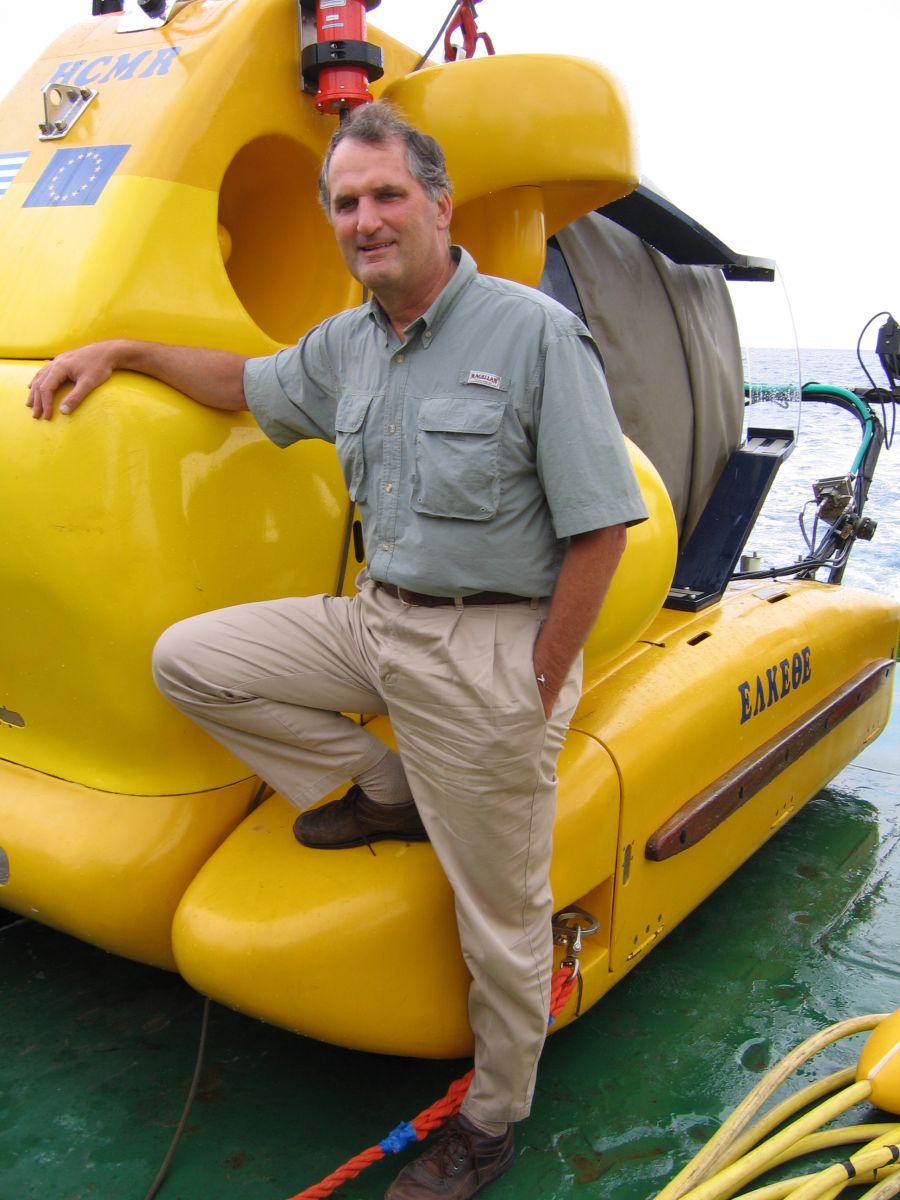
2019
The Archaeological Institute of America is pleased to present the 2019 Martha and Artemis Joukowsky Distinguished Service Award to Professor John Hale of the University of Louisville and the Kentucky Society.
Dr. Hale has served the Kentucky Society for over 30 years, including a long stint as president, when he graciously opened his home to AIA speakers. He is well-known throughout the AIA speakers bureau for his domestic generosity.
Dr. Hale has also been one of the most sought-after speakers in the AIA’s lecture program for over sixteen years. He has been chosen for several prestigious AIA lectureships, such as the McCann/Taggert and the Norton ones.
The AIA lauds John’s contribution to the Institute over the many years and views him as the consummate selfless AIA member. He shares his research in a way that keeps audiences enthused about archaeology and he generously gives of his time to help the AIA at both local and national levels.
In every sense of the meaning behind this prestigious award, John Hale is supremely deserving of the Martha and Artemis Joukowsky Distinguished Service Award for 2019.
2018
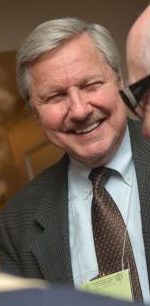
2016
The Archaeological Institute of America is pleased to present the 2016 Martha and Artemis Joukowsky Distinguished Service Award to Brian Heidtke.
Heidtke, an active and long-standing member of the AIA, has served the Institute in a variety of roles and posts. Most significantly, he served for six years as Treasurer, during which time he introduced a higher level of management oversight of the Institute’s finances, including the development of a set of metrics to gauge the Institute’s financial strength and performance. Heidtke also put into place a new framework for investing the Institute’s endowment funds. The Institute’s strong financial position is due in great measure to these efforts.
As an AIA Board member, Heidtke’s support for the Institute’s mission is evidenced by his generosity, through the sizable donations made by the Heidtke Foundation to the Annual Fund and to the Site Preservation Fund, and by his personal involvement in AIA fund-raising efforts. He has provided invaluable assistance to the Institute in organizing, promoting, and realizing the Annual Gala. Heidtke also established an administrative endowment to ensure that the organization would have sufficient resources to fund its own administration.
His dedication and tireless efforts on behalf of the AIA have earned Heidtke the greatest respect and high regard from his fellow Trustees and the Institute’s staff. Through this award, the Archaeological Institute of America recognizes Brian Heidtke’s contributions throughout his many years of devoted service.
2015
2014
2013
2012
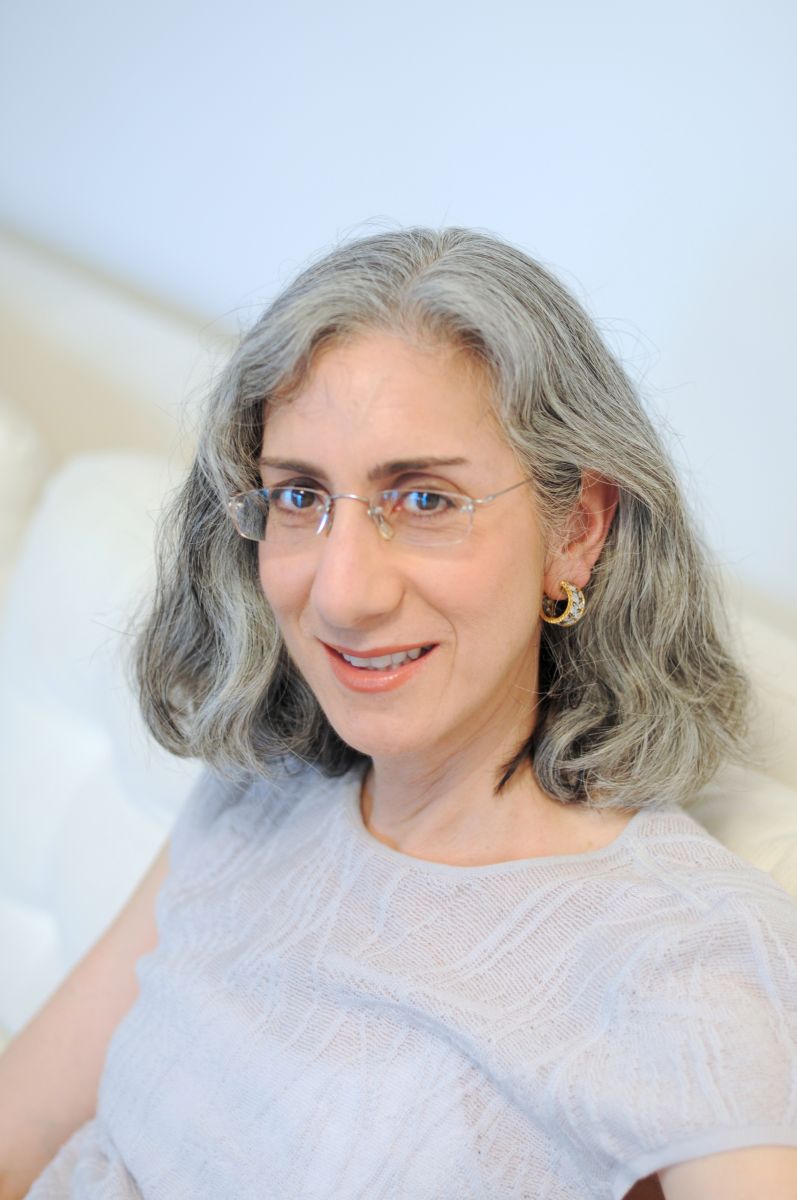
2011
The Archaeological Institute of America is pleased to bestow upon Ava Seave the 2011 Martha and Artemis Joukowsky Distinguished Service Award. As AIA General Trustee and chair of the Archaeology Magazine Committee for six years, Seave brought her industry expertise and leadership skills to the operations of Archaeology Magazine; her efforts have helped it to become a more financially sound and sustainable channel of public outreach for the Institute.
To begin, Seave reviewed the strategy of every aspect of Archaeology Magazine, from content and artistic presentation to production, circulation, and advertising. Then, with great consideration for existing staff and procedures, the magazine makeover started. Cover selections were studied for “engaging” effectiveness. Shorter articles were added to mix with longer ones. With new, integrated marketing packages, many advertising clients became partners of both the magazine and the Institute rather than just purchasers of ads. As a result, the cost per new order is 40% less and circulation has reached its highest level ever.
Throughout this transition process, Archaeology Magazine and the AIA achieved a stronger working relationship. “Dispatches,” the first-ever Institute section in the magazine, brings highlights of the AIA’s work to the public in an engaging, readable format. For these significant contributions, which have “furthered the work of the Institute and increased public awareness regarding its mission,” Ava Seave is a worthy recipient of the 2011 Joukowsky Distinguished Service Award.
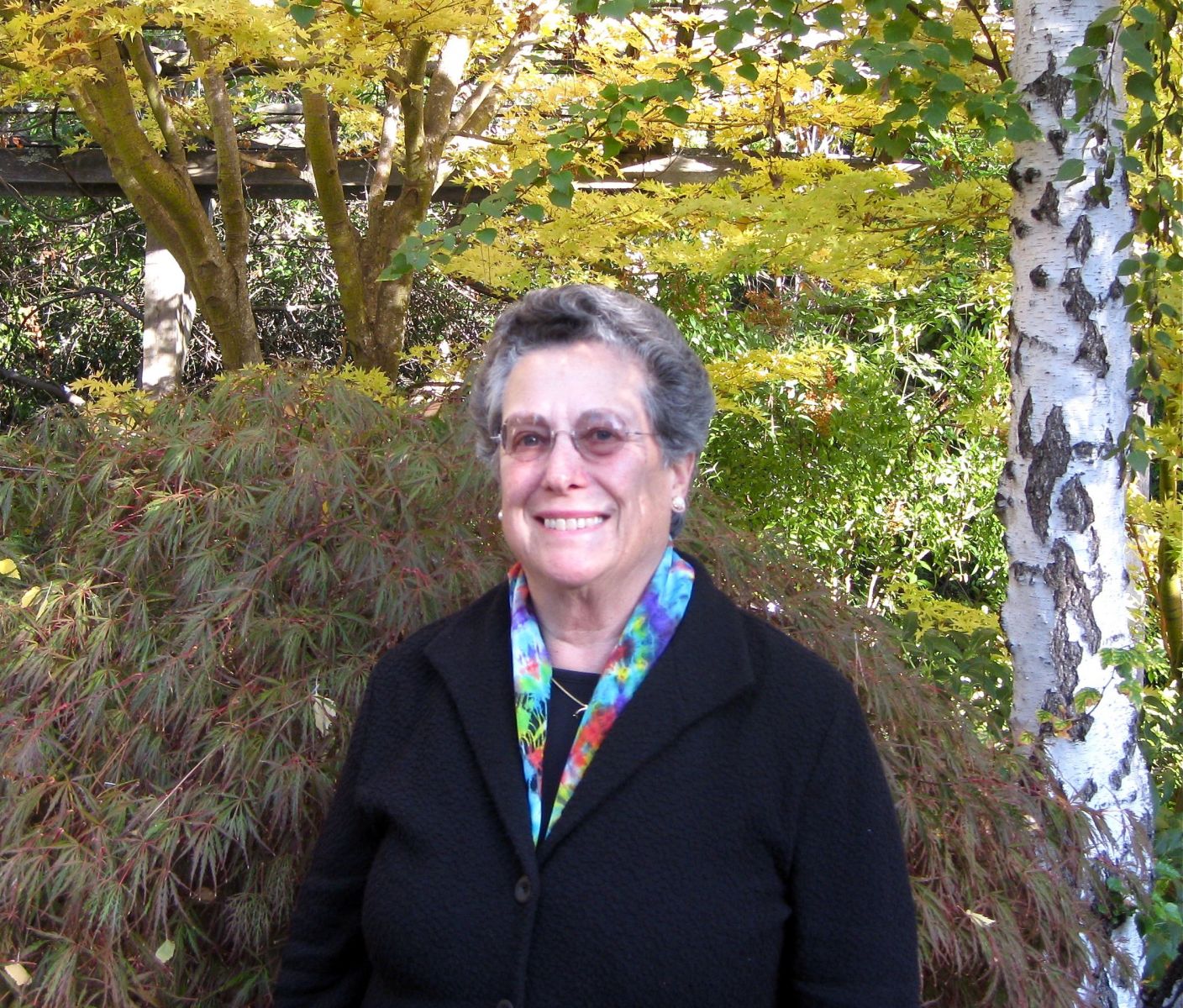
2010
The Archaeological Institute of America is pleased to bestow upon Nancy Delia Palmer the 2010 Martha and Artemis Joukowsky Distinguished Service Award. A founding member of the Stanford Society of the AIA, Palmer served as its membership secretary, society contact, and program coordinator for 31 years. Though recently retired as a society officer, her inspiring management kept the Stanford Society alive and vibrant for decades. Many AIA lecturers remarked upon her gracious hospitality when they visited Stanford.
Palmer also contributed her leadership to the AIA on the national level. In 1985, she was elected one of the first Society Trustees; she worked tirelessly at AIA annual meetings and served on various committees devoted to improving local societies.
Palmer exemplifies the society leader whose passion for archaeology is so strong that she is willing to do whatever it takes to see her society thrive. Recognizing that her dedication was the backbone of the Stanford Society, the AIA recognizes Nancy Delia Palmer as deserving recipient of its Joukowsky Distinguished Service Award.
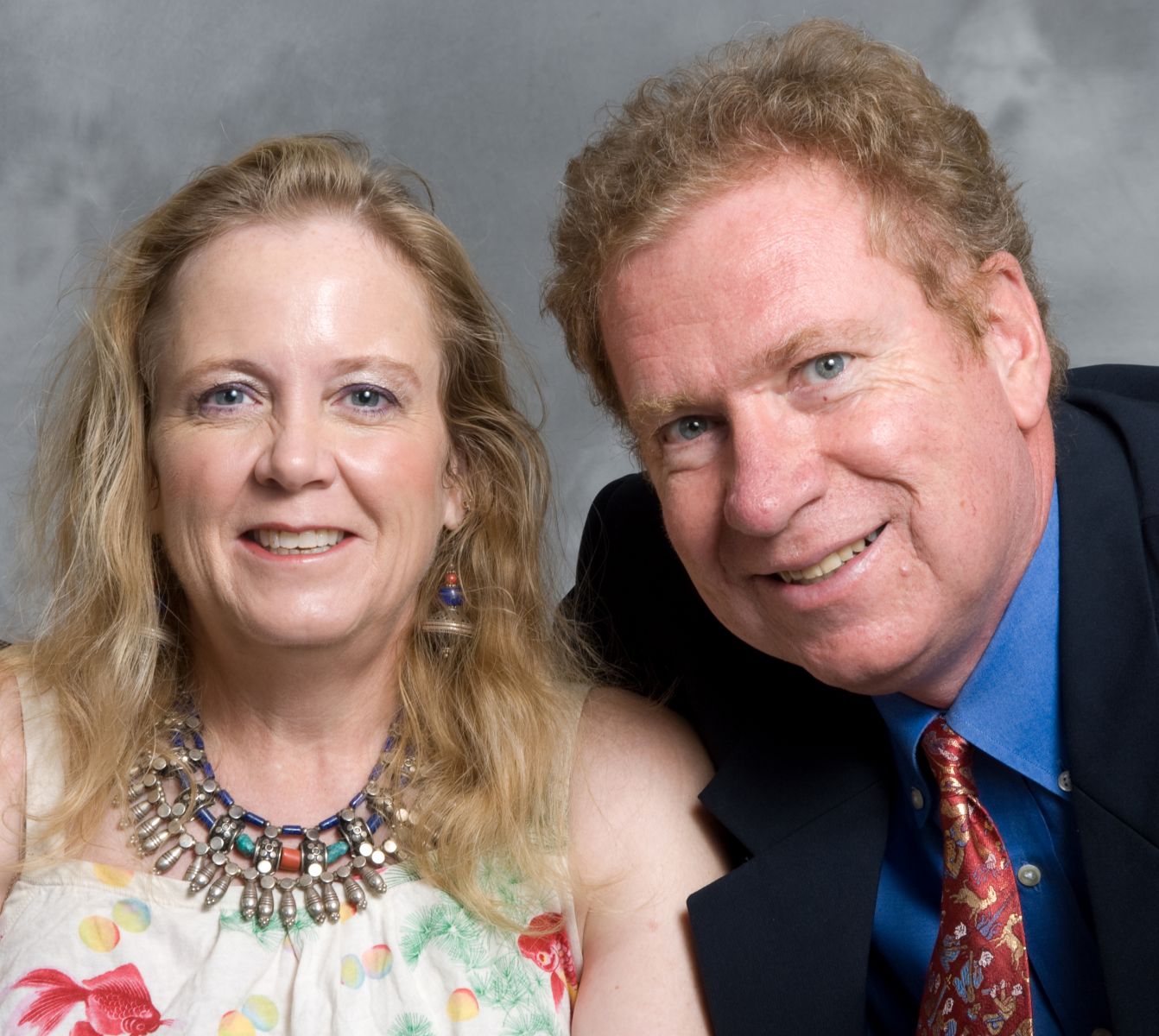
2009
The Archaeological Institute of America is pleased to bestow upon Michael and Neathery Fuller the 2009 Martha and Artemis Joukowsky Distinguished Service Award. In 1981 their mentor, Prof. Patty Jo Watson, gave them a membership in the AIA as a wedding present. As enthusiastic graduate student volunteers to the St. Louis Society, Michael’s and Neathery’s first assignment was bartending during AIA dinners. Quickly their responsibilities rose to being officers, first Michael then Neathery served as Vice President and then President of the St. Louis Society.
The Fuller’s greatest interests and expertise are in education. Neathery’s summer field school for Middle School students laid the foundation for the successful ten-year St. Louis Society Junior Archaeology Program for public school students. Michael applied his video recording expertise to create a special component– “Archaeological Pictionary–where students could see and hear brief descriptions of artifacts and methodologies across diverse ancient civilizations. Neathery created a follow-up “game” that allowed students to demonstrate what they had learned. For an AIA/Girls Inc/NEH supported program called “Dig It,” Neathery produced a complex educational webpage. Michael and Neathery fostered the idea that the “model” (*web?) site should include the historic archaeological record of African-Americans and Euro-Americans.
Michael and Neathery have been active participants in the yearly AIA Annual Meeting Archaeology Fair. One or both of them regularly serves on the AIA education committee. Michael is on the AIA National Lecture circuit and lectures yearly for the St. Louis Society. In the 1990s Neathery served on the national AIA Governing Board as a Society Trustee. With all these consistent, dedicated volunteer contributions to both the St. Louis Society and the National AIA, it is fitting and highly appropriate for them to receive this award.
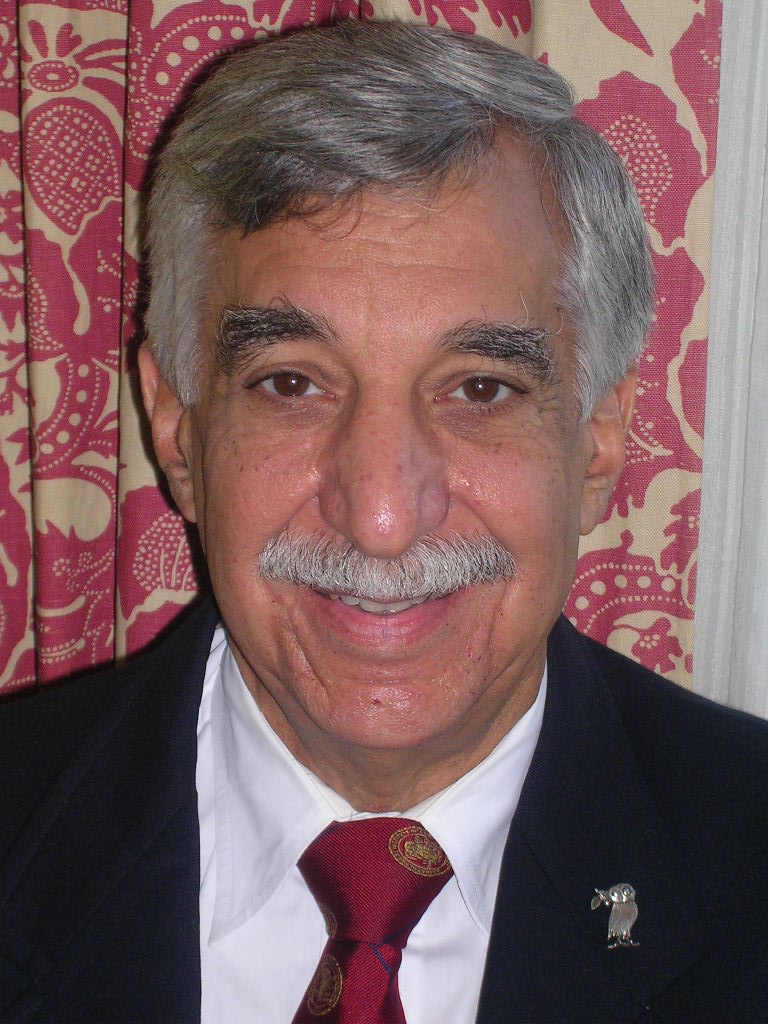
2008
The Archaeological Institute of America is pleased to bestow upon Jeffrey Lamia the 2008 Martha and Artemis Joukowsky Distinguished Service Award. Jeff should be commended foremost for the time, energy, and expertise he contributed to the AIA at a time when the Institute most needed his skills and wisdom.
As a general trustee on the Governing Board, Jeff’s initial undertaking was to chair the Dig Oversight Committee. This children’s magazine was not a cost-effective operation for the Institute, and Jeff’s ability to get Dig finances in order prepared the way for its sale while still allowing the AIA input on its content. During Jeff’s tenure as treasurer of the AIA, financial problems that had plagued the Institute over the years were addressed when he developed more efficient ways to track income and expenses. The skills that he had honed so successfully in the private world of banking and finance proved invaluable: he developed techniques for reporting general finances and specifics of endowments so that officers, board members, and staff could manage income and expenses more effectively.
In recent AIA history, there has perhaps been no one who has made such a positive impact on the Institute’s finances as Jeff. The result has allowed the AIA to fulfill its missions to members, the scholarly community, and to the public at large. Jeff’s passion for archaeology continues with service on AIA committees and for the New York Society. The Joukowsky Distinguished Service Award is fitting tribute to service born of devotion to the discipline of archaeology and to the Institute that promotes archaeology.
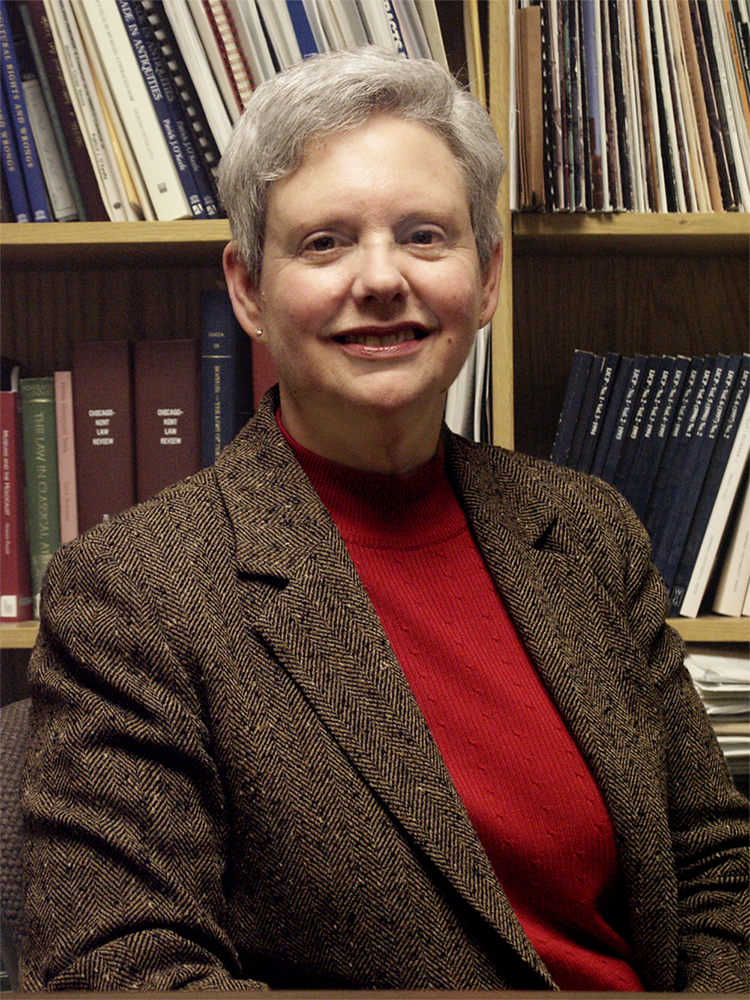
2007
The Archaeological Institute of America is proud to present the 2007 Martha and Artemis Joukowsky Distinguished Service Award to Patty Gerstenblith. Professor Gerstenblith has a Ph.D in fine arts and anthropology from Harvard University and a law degree from Northwestern University. She teaches at De Paul University College of Law in Chicago, where her specialty is cultural property law. Patty Gerstenblith has become one of the leading voices in the world in cultural property law and the issues surrounding the safeguarding of archaeological sites, monuments, and antiquities, and curtailing looting and the illicit trade in undocumented antiquities. She is a former member of the federal Cultural Property Advisory Committee, co-chairs the American Bar Association’s International Cultural Property Committee, and is president of the Lawyers’ Committee for Cultural Heritage Preservation. Patty Gerstenblith has been a member of the AIA and active in its programs for years. She is a former AIA General Trustee and currently serves as chair of the Cultural Property Legislation and Policy Committee and as a member of the Professional Responsibilities and Governance Committees. But this is her “ordinary” service. What she has done—and still does—to deserve the Joukowsky Award is “extraordinary” service, mostly behind the scenes, where she serves as an unofficial advisor to the AIA President and the AIA Vice President for Professional Responsibilities, educating them and other members of the Institute on the most effective way to combat the dangers facing the archaeological record through looting, vandalism, and greed. Her wide knowledge and vast experience of the law and of archaeology, as well as her passion for and commitment to the important issues confronting the leaders of the AIA (past, present, and future) as stewards of the human past, have made her an invaluable partner in getting the word out where it matters. If the voice of the AIA is a force to be reckoned with—in Congress, in the courts, in the world of museums, and on the international stage—it is due in part to the efforts of Patty Gerstenblith. The AIA is fortunate to have her as a champion and is honored to bestow on her the Joukowsky Distinguished Service Award.
2006
It is with great pleasure that the Archaeological Institute of America presents the Martha and Artemis Joukowsky Distinguished Service Award for the year 2006 to Professor James Russell. Professor Russell’s long record of service to the AIA exemplifies the spirit of the Joukowsky Distinguished Service Award to perfection.
For some forty years James Russell has worked tirelessly on behalf of the AIA internationally, nationally here in Canada, and locally in the AIA-Vancouver Society. He has served on committees at all levels and risen in the ranks to fill some of the highest offices the AIA has to offer. Internationally he served as President, First Vice President, and Academic Trustee of the Institute, and locally in various offices of the AIA-Vancouver Society. He was the first-ever AIA President from outside the United States, and a founding father and first President of AIA-Canada. Although the noble experiment that was AIA-Canada ended in 2005, it accomplished the purpose of energizing the members and local societies in Canada and integrating them more fully into the larger Institute.
Jim Russell has been active in the AIA since he first became a member in the early 1960s. As a very new and junior member of the Classics Department at the University of British Columbia in 1966, Jim was taken aside by the Head of his department and instructed to form a local AIA society in Vancouver. Within six months it was up and running! Russell was promptly appointed to serve as Secretary, Treasurer and Program Coordinator, all in one, of the new society. Since then he led the Vancouver Society for 16 of its first 25 years of existence, including two years as Society President. During this time the Vancouver Society grew from an original 30 members to over 100 and provided a full program of seven lectures a year, supplemented by occasional full-day symposia and field trips to local museums. In addition, Professor Russell curated two visiting exhibitions at the UBC Museum of Anthropology in collaboration with the Vancouver Society. He also initiated a joint venture between the Vancouver Society and the UBC Department of Continuing Studies whereby colleagues presented courses on archaeological and related themes and a share of the profits was paid to the Vancouver Society. The resulting funds enabled the Vancouver Society to enhance their programs for many years right up to the present.
Jim Russell has served as a speaker on the AIA’s traveling Lecture Program almost every year since 1970 and has visited about 75 percent of the active chapters, acting as a welcome ambassador between the Institute and the grass-roots membership. He has held some of the most prestigious endowed lectureships including the Charles Eliot Norton Memorial Lectureship in 1995-1996. His lively and engaging lecture style invariably leads to such reviews as “send him back as soon as possible!” and “The best AIA talk we ever had.” Professor Russell has also extended his ambassadorial duties to the AIA Tour Program for which he has led successful tours to Turkey, Ireland, Scotland, and Sicily again to enthusiastic reviews by the travelers in his charge.
Professor Russell attended his first Council Meeting at the AIA/APA Annual Meeting in Toronto in 1968 and since then he has regularly attended annual meetings and the Council. Since the 1970s Jim has been a member of numerous Institute committees, many of which he chaired. His duties have included service on the Program for the Annual Meeting Committee, Gold Medal for Distinguished Archaeological Achievement Committee and its predecessor the Committee on the Award; Foreign Honorary Members Committee, Nominating Committee, Governance Committee, and the Archaeology Magazine Committee, the Editorial Advisory Board for the Magazine and the Archives Committee. Between 1988 and 1991 Jim was co-chair, with Clemency Coggins, of the Professional Responsibilities Committee, during which time the PRC formulated and the Council adopted the general Code of Ethics which articulates the AIA’s core principles with respect to the archaeological record and serves as a model for our members and for other professional organizations to follow.
James Russell has performed all his AIA service while maintaining an active teaching, research and excavation program of his own, in particular directing the Canadian Excavations at the Roman/Byzantine site of Anemurium on the south coast of Turkey for over 30 years. Although Jim is now Professor Emeritus of Greek and Roman Art and Archaeology at the University of British Columbia in Vancouver, he has not retired from the AIA but continues to serve as an exemplary “good citizen” on committees, as a lecturer and as a tour leader. The Archaeological Institute of America is indeed proud to present the 2006 Martha and Artemis Joukowsky Distinguished Service Award to Professor James Russell.
2005
It is with distinct pleasure that the Archaeological Institute of America presents the Martha and Artemis Joukowsky Distinguished Service Award for the year 2005 to Anne Salisbury. This honor is bestowed on the exemplary volunteer considered to have best furthered the work of the AIA through exceptional service and commitment to the goals of the Institute.
Salisbury has been an active supporter of the AIA for well over a decade, working quietly and diligently to promote public awareness of its mission. She served two terms as a Society Trustee and labored on numerous committees, chairing the Outstanding Local Society Committee and the Annual Meeting Outreach Committee. She has also devoted enormous time and energy building the Minneapolis/St. Paul Society. Salisbury secured grants from the Minnesota Humanities Commission to supplement the lectures provided by the Institute, coordinated the local lecture series — always ensuring the high caliber of the speaker, and negotiated quality venues for the talks that were easily accessible to the public. Her efforts contributed to the trust and confidence the community placed in the Minneapolis/St. Paul Society and enabled it to grow and flourish under her leadership.
Anne Salisbury’s commitment to the Minneapolis/St. Paul Society and the AIA is most recently exemplified by her development of an Archaeology TV series in Minneapolis. She conceived, organized, and oversaw the planning and filming of this project, which is comprised of eight independent segments, each featuring a local archaeologist and their work. She took upon herself the tasks of locating a studio, gathering cast and crew, and providing introductions and conclusions for each segment. Salisbury oversaw all filming and editing and took great care to ensure that the message of each program would further the educational mission of the AIA. The series will be distributed to all cable TV stations throughout Minnesota.
In addition, Anne has always been an active organizer of events at our Annual meetings. As chair of the Annual Meeting Outreach Committee she has been a strong force in our annual Archaeology Family Fair and, at the 2004 Annual meeting in San Francisco, she was instrumental in organizing two teacher’s workshops co-sponsored with the University of California at Berkeley. To add to her myriad credentials, early in her tenure as a Society Trustee, Anne took on the task of collating and analyzing the results of a survey aimed at understanding the needs of local societies.
Over the years, Anne’s commitment to the growth and well being of the AIA cannot be over stated. The Archaeological Institute of America is proud to present her with the 2005 Martha and Artemis Joukowsky Distinguished Service Award.
2004
It is with special pleasure that the Archaeological Institute of America presents its Martha and Artemis Joukowsky Distinguished Service Award for 2004 to Dr. Eleanor Guralnick. Through her many years of outstanding and varied service to the AlA, Dr. Guralnick exemplifies the spirit of selfless commitment to the work of the Institute that the Joukowsky Distinguished Service Award was designed to honor.
Eleanor Guralnick has performed exceptional volunteer service for the AlA at both the national and local society levels. A long time member of the Chicago Society, she has held every office, serving as its President for six years, Vice President for two years, Secretary for six years, Treasurer for three years, Executive Committee Member from 1972 till the present, and as a representative to Council every year since 1969! Through her efforts she has made the Chicago Society a model for outreach to adults and children alike. For scholars and members of the public she has organized and presided at three Chicago Society regional symposia, in 1982, 1987, and 1990, editing and promptly publishing the papers at each of these symposia under the titles Vikings in the West (1982), Sardis: Twenty-seven Years of Discovery (1987), and The Ancient Eastern Mediterranean (1990). For children she developed and administered an Archaeology Day program for 6th graders in the Chicago public schools, sponsored by the AlA-Chicago Society in cooperation with the Art Institute of Chicago. For two days each year 150 children from inner city schools ·hear a lecture by a digging archaeologist, tour museum galleries with ancient artifacts, and do real archaeological work reconstructing a broken replica of an ancient pot. In many years it has been possible to give each participant a copy of Archaeology magazine or a copy of Dig. The program, ongoing since 1991, received the Appreciation Award by the Chicago School Board and the Chicago Tribune Company in 1991-92 as the best Adopt-a- School Program.
In addition to all her work for the Chicago Society, Eleanor Guralnick has been active for many years on the national scene. Among her many roles, she served for six years (1995-2002) as a General Trustee, chaired the Regional Symposia committee from 1990-2000, and is currently very much engaged in several more committees: the Development Committee, the Finance Committee, the Investment sub-committee, the Education Committee, and the Societies and Membership Committee. She is actively involved in the Near Eastern Archaeology Interest Group as well. She has also participated in the national lecture program, delivering some 44 lectures to 39 AlA societies since 1972.
Throughout all her years of devoted service to the AlA, Eleanor Guralnick has found the time to be a productive scholar, publishing important research in the AJA, JNES, Iraq, Gnomon, and in many other prestigious journals and conference papers. She has presented many papers and organized colloquia at the AlA Annual Meetings as well as at numerous other national and international conferences, symposia and colloquia.
There are few parts of the Institute and few of us who have not been touched in some way by the energy, creativity, and just plain hard work that Dr. Eleanor Guralnick has contributed to further the work of the AlA and increase public awareness of its mission. The Archaeological Institute of America is proud to present her with the 2004 Martha and Artemis Joukowsky Distinguished Service Award.
2003
The Martha and Artemis Joukowsky Distinguished Service Award of the Archaeological Institute of America recognizes volunteers who have furthered the work of the Institute and have improved its effectiveness through their sustained exceptional service. The Institute is very pleased to present this year’s award to Gertrude duPont Howland in recognition of her many years of service as trustee on the national board as well as her many contributions to her local AIA societies. Gertrude exemplifies such service and has been a pioneer in establishing new directions for the AIA. She first became an AIA trustee in 1968 and served until 1970. But Gertrude is especially distinguished as our first Society Trustee, a position she held from 1984 through 1990. This position was created particularly to address the needs of our lay membership in our now 102 local societies and to link the local chapters more closely to the national organization. Gertrude laid such a firm foundation for this position that in 1993 the AIA designated a special Vice President for Societies that continues to be an important part of our organization today.
While a trustee, Gertrude also had the vision to establish our first book award in 1989, the James R. Wiseman Distinguished Book Award that continues to bring prestige to the Institute. As chairman of the Tours Committee in 1988-1989, she further developed this area of our outreach. In addition, she served on the Development and Membership Committees. Her continued enthusiasm for archaeology, her sense of service and her generosity both to archaeology and to the AIA over the years are an inspiration to us all.
But Gertrude is much more than a volunteer archaeologist. She has achieved for herself a reputation as an international conservator, specializing in the restoration of ancient pottery. She has worked for 32 seasons on 9 different archaeological sites from Majorca to Jerusalem. Gertrude began her long career in conservation in 1965 with Ross Holloway from Brown University who was then working on an excavation in the Athenian Agora. She worked with him several more seasons in southern Italy at Satrianum and at Buccino where her work is still exhibited in the local museum. From Italy she went to Jerusalem and restored the pottery from Ashdod, later returning to Italy to work at Cosa. She spent three seasons at Split with Sheila McNally, 3 seasons in Sardinia with Miriam Balmuth, and 14 seasons in Majorca, Spain, with Dan Woods on material from Pollentia. She also helped establish the local museum there where her work is exhibited.
Throughout her career Gertrude also found time to be active in her local AIA society, first in Greenwich, Conn. and now in Richmond, Va., where she returned in 1990 to this city where she was born. She has served as president of the Richmond Society, is currently their Hospitality Chairman and serves on its board. Many speakers lecturing in Richmond have enjoyed her gracious southern hospitality.
On the personal side, Gertrude has raised three sons, and worked for 50 years contributing to the civic life of Greenwich, Conn. In recognition of these accomplishments, the Greenwich public library published a book about her civic work entitled “Missions Accomplished”.
Gertrude duPont Howland is unique. The Institute is delighted today to recognize her unique and generous contributions. She has enriched our organization as our first Society Trustee. Through her vision, dedication and enthusiasm she laid the groundwork for this important position. Gertrude’s innate social and diplomatic skills and sense of fun have made the AIA a warmer, more hospitable and effective organization. Working with local societies, she helped establish as part of the annual meeting the hospitality we all now enjoy with informal places to gather, have refreshments and go on guided tours to local sites. I do not believe that Gertrude has ever missed an annual meeting. Her many friends over the years are delighted that she is receiving the AIA’s Distinguished Service Award today.
2002
Frank Wezniak guided the finances of the Institute for nearly sixteen years, during times of great fiscal challenges as well as through times of gratifying growth. The Institute is delighted today to acknowledge that it has greatly benefited from his wise and innovative stewardship, and to recognize with this award his extraordinary accomplishments.
2001
The Martha and Artemis Joukowsky Distinguished Service Award of the Archaeological Institute of America recognizes volunteers who have furthered the work of the Institute and have improved its effectiveness through their sustained exceptional service. Ira Haupt, II, recipient of the 2001 award, clearly exemplifies such service to the AIA.
When Ira came to the AIA as a General Trustee in 1992, through his interest in New World archaeology, he brought to his service in the AIA the significant experience of his many years of responsibility in the Explorer’s Club in New York. Joining the Finance Committee and Development Committees in 1993, Ira suggested many approaches in these areas which were new and innovative for the AIA.
Within the Finance Committee, Ira served as chair of the Investment Subcommittee, helping steer the AIA investments into more sophisticated allocations during a time of rapid change in the financial markets. On the Development Committee, Ira spearheaded the effort to establish separate accounts for donated assets, a step that he knew would be necessary in the capital campaign to endow the national lecture program. Ira’s insistence on a professional approach in these areas helped to bring the AIA’s finances into better perspective in order to further the AIA’s archaeological missions.
Ira served the AIA in ways beyond his particular committee responsibilities as well. It was Ira who brought to the AIA the current tour director, thus providing the AIA with tours that have much greater AIA control and input. As a result, the organization has benefited both in personal contact with its members and financially. This effort of Ira’s has already brought the AIA many new friends and will continue to do so in the future.
When Ira retired from his service as AIA General Trustee in 1998, he became treasurer of the New York Society of the AIA. Bringing the same instinct to professionalize the workings of the New York Society as he did to the National AIA, Ira has improved the return on the New York Society’s funds and is spearheading a fundraising campaign to provide more security for the extensive programs of the New York Society of the AIA. His interest in supporting his local society is a model for all others who are involved on the National level.
In addition to giving significant time and energy, as well as considerable expertise, to the AIA, Ira has endowed a lecture as part of the AIA’s capital campaign, thus helping insure that the AIA’s educational outreach mission effectively continues in the new millennium.
The Archaeological Institute of America is pleased to present Ira Haupt, II, with the Martha and Artemis Joukowsky Distinguished Service Award for his valuable contributions to the AIA of his knowledge, intelligence, and experience, which have helped set the AIA on a new, more professional course in the third millennium.
1999
The Martha and Artemis Joukowsky Distinguished Service Award of the Archaeological Institute of America recognizes those volunteers who have furthered the work of the Institute and have improved its effectiveness through their sustained exceptional service. There is no one who meets these criteria better than this year’s recipient, James R. Wiseman.
Jim’s service to the Institute began early in his career when, shortly after his arrival at the University of Texas at Austin, he joined in founding the Central Texas Society of the Archaeological Institute of America. He served from 1962 to 1964 as the society’s first President, and to this day the Central Texas Society continues to thrive.
Following his move to Boston University in 1973, Jim was elected President of the Boston Society, an office that he held from 1979 to 1981. Immediately thereafter, he was elected Vice President of the AIA and served in that position for four years (1981 to 1984). Not one to rest on his laurels, at the same time Jim also took on the challenge of enlarging the role of archaeology at Boston University, founding the Center for Archaeological Studies (1980), the Department of Archaeology (1982), and the Center for Remote Sensing (1985). Through Jim’s efforts Boston University is now recognized worldwide as a leader in innovative archaeological research and education.
During the same period, Jim played a crucial role in the history of the AIA. When he was elected President of the AIA in 1985, the Institute was in dire financial straits. Recognizing that only drastic measures would stem the flow of red ink, Jim instituted a number of cost cutting measures and made the important decision to move the headquarters of the Institute to its current home at Boston University. Through Jim’s efforts, Boston University has become a leading benefactor of the AIA, providing it with office space and other essential services. The restoration of financial viability has meant that the AIA once again can focus on its central mission of providing leadership and education in archaeology.
Jim never lost sight of this mission, even during the difficult years. His conviction that the Institute should provide a forum for dialogue among all archaeologists, not only those in the U.S. and Canada, led to the First Joint Archaeological Congress, which was held in 1989. Co-sponsored by the AIA, the American Philological Association, the American Schools of Oriental Research, the Society for Historical Archaeology, and other archaeological organizations, the broad scope of the program resulted in an attendance of nearly 3,400 individuals, both professional archaeologists and those with an avocational interest in the field.
Since stepping down as president in 1988, Jim has continued to serve the AIA both as a general trustee (1993 to 1998) and currently as a member of the Finance and Professional Responsibilities Committees. His extraordinary dedication to the AIA has been a focal point of his long and distinguished career. In recognition of his extraordinary and long-standing commitment to the AIA and its mission, the Archaeological Institute of America is pleased to present James R. Wiseman with the Martha and Artemis Joukowsky Distinguished Service Award.
1997
To learn the meaning of service, one may look at the life of Raymond L. Den Adel. A member of some 40 organizations that pertain to his interests in classical studies, archaeology, his church, Rockford College (where he taught for 30 years), the Rotary Club, and his Dutch heritage as a native of Pella, Iowa, Ray has done far more than pay the substantial dues to all the organizations he has joined. His curriculum vitae is filled with the titles of assignments he has accepted in these associations. It is typical of Ray that he has been willing to serve in the humblest jobs as well as in the distinguished offices of president, vice president, executive director, or chairman.
Here we focus on the service he has offered to just one of these institutions, our own Archaeological Institute of America. For more than 30 years, he has been a passionate worker on behalf of the AIA, beginning with his role as founder (in 1968) and perennial officer of the Rockford Society. Under his leadership, the Rockford Society became one of the largest and most active AIA Societies of all time, famous for its festive banquets and its record-breaking attendance (over 50,000 people came to events during the 30 years of Ray’s guidance), as well as the sheer number and variety of its activities. His commitment at the grassroots level of the Local Societies led to his appointment to national governing organizations, including the AIA Council (which he actually first attended as a delegate in 1966), the Executive Committee (1976-1982) and its successor, the Governing Board (1990-1994). He continued to be a force on the Governing Board in his election to the important position of Vice President for Societies (1994-1996). He never declined the call for service on the many committees of the AIA, and thus was a member of the committees for the Lecture Program, Membership, Nominating, Regional Symposia, Kershaw Prize for Outstanding Local Society, and others. As a lecturer on the national circuit (1981-1985), he made yet another significant contribution to the Institute.
The degree of commitment to the AIA that Ray has demonstrated seems all the more remarkable when one considers that he has performed similarly for a number of other organizations, and further, that his life as a volunteer was anchored in his academic and professional responsibilities. Having received an M.A. from the University of Iowa in 1959 and his Ph.D. in 1971 at the University of Illinois at Urbana, Ray held teaching positions at various institutions, including Pella High School, the University of Iowa, the University of Illinois, and finally Rockford College, where he spent the greater part of his career. There he became chairman of the Classics Department in 1967, achieving the rank of full professor in 1975 and, upon his recent retirement, that of professor emeritus. His publications show a striking range of interests, from Caesar and Sallust and the Roman emperors to various topics in etymology and archaeology, including a study called Alexander and the Pella Legacy, in which he reflected on the ancient city of Pella, which had the same name as his own birthplace. It is characteristic of Ray that many of his publications are pedagogical or didactic, and demonstrate his desire to help others perform their jobs well.
The Archaeological Institute of America has deemed it appropriate to reward Ray Den Adel for his distinguished service in this year of 1997, in which the form of recognition has for the first time been entitled the Martha and Artemis Joukowsky Distinguished Service Award. The charge to those selecting the honoree cites the standard for volunteer service to the Institute set by the Joukowskys, and specifies that the Distinguished Service Award should be bestowed on those who have improved the effectiveness of the AIA and increased public understanding and appreciation of its goals through their sustained and exceptional service. Raymond L. Den Adel, the Archaeological Institute of America wishes to acknowledge by means of this award the unbounded devotion you have shown to the organization. We wish to recognize the strength of counsel and character Ray has brought to our tables, and the grace, dignity, and good humor with which he has endured the inevitable battles that are fought when important decisions are at stake. We wish to cite especially the range of his services and the length of time he has labored on behalf of the AIA, and the inspiring example he has set for us all in the way he created and built a Local Society and served its members- the individuals who are at the heart and soul of the Institute. With this award we wish to make a formal statement of the great affection and appreciation the many members and Societies of the Institute have for Raymond den Adel. The Archaeological Institute of America is extremely proud to present the Martha and Artemis Joukowsky Distinguished Service Award to him as a sign of its enduring gratitude for his commitment to the highest missions of the organization.
1996
Since 1978 the name of Leonard V. Quigley has appeared continuously with the list of members of the Governing Board of the Archaeological Institute of America. During his long service as General Counsel of the Institute, he has seen six Presidents come and go. Yet of all the officers, Len Quigley is little known to the general membership. For this reason, the time is long overdue to recognize Len Quigley’s immense contribution to the well-being of the Archaeological Institute of America by awarding him its Award for Distinguished Service.
Following a long and honorable tradition of voluntary service, which belies the low esteem in which the legal profession is currently held, Leonard Quigley accepted the Institute’s invitation in 1978 to become its General Counsel. In doing so he placed his vast knowledge of the law and the resources of his office at the disposal of the Institute free of charge. Though not without a keen amateur interest in archaeology before committing himself to the AIA, Len’s decision to accept the challenge was prompted as much by his sense of adventure and his friendly spirit. A graduate of the College of the Holy Cross (B.A. 1953), Leonard Quigley received his professional training at Harvard Law School (LL.B. magna cum laude 1959) and at New York University Law School where he specialized in international law (LL.M. 1962). He has served most of his legal career with the illustrious New York City firm of Paul, Weiss, Rifkind, Wharton and Garrison, of which he is a partner and leader of the Canadian practice. During his legal career Len has fulfilled many demanding responsibilities, notably in the fields of corporate law, international law, and in the North American Free Trade Agreement. His membership in both the American and Canadian Bar Associations is an especially appropriate reflection of the AIA’s recognition of its own international nature in the recent establishment of AIA-Canada.
If the contrast between the high-powered universe of international trade that Len inhabits during the week and the leisurely academic world of the AIA must on occasion bring a smile to Len Quigley’s face, there is never the slightest hint that in his pro bono handling of its legal affairs the AIA is any less deserving of his attention than his far grander, paying clients. Like a good physician, Len is always on call, whether to offer an informal legal opinion during the deliberations at Governing Board and Executive Committee meetings or to cast a critical eye over some sensitive document. In the past five years alone, for example, Len Quigley has reviewed draft after draft of the latest major revision of the bylaws, scrutinized the personnel policies that regulate conditions of employment for the staff at AIA headquarters and in the office of Archaeology Magazine, engaged experts from his firm to draw up the contracts for the Archaeology television series and for the monograph and colloquia series, defined the legal status of the Institute’s endowments and restricted funds, and maintained a watching brief over the evolving formulation of the Code of Professional Standards. These activities may seem remote from the stated mission of the AIA, but their careful execution is essential in providing a stout shield against the threat of expensive litigation with all its debilitating and distracting consequences. That an organization with a public profile as high as that of the AIA and with a magazine that does not eschew controversy continues to enjoy freedom from legal suits is due in no small measure to the vigilance of our General Counsel and the powerful authority he commands through the reputation of the firm he serves.
Leonard Quigley, the AIA recognizes with profound gratitude the outstanding service that you and your colleagues at Paul, Weiss, Rifkind, Wharton and Garrison have rendered the cause of archaeology over the past 18 years. We thank you for the sage advice and expert legal counsel you have provided in abundance and pro bono. We appreciate your patience and good humor in handling your sometimes exasperating clients. Above all we cherish your friendship, warm humanity, and puckish sense of fun. The Archaeological Institute of America is proud to present the Distinguished Service Award as a token of its gratitude for sharing with us your professional skills so generously to our great benefit.
1994
The Archaeological Institute of America’s Award for Distinguished Service goes today to Anna Shaw Benjamin, Professor Emerita of Douglass College, Rutgers University. But it probably comes as no surprise, at least to some in the audience, that the 1972 AlA Council earlier passed, by acclamation, a resolution recognizing Anna on her retirement as Editor of Archaeology magazine. It stressed her five-year editorship, describing her as selflessly diligent, imaginative, and determined. As was typical in those days, the editorship was unpaid, except for the honor, but it was distinguished service of the first order. Many felt that, as Editor, Anna expanded the magazine’s archaeological content, as she was to do later with the content of the archaeology program at Rutgers. By opening up the magazine to a broader world, she surely prepared her readers for the ecumenical Archaeology it has become.
Our honoree received both undergraduate and graduate education at the University of Pennsylvania (M.A. 1947, Ph.D. 1955) and at the American School of Classical Studies at Athens. At the latter she held two fellowships, being a Thomas Day Seymour Fellow (1948/1949) and a Fulbright Fellow (194911950). She learned to turn a spade at the Agora and years later took it up again at the Aphrodisias excavations.
Anna Benjamin commenced her devoted teaching career in 1951, as Instructor in Classical Languages and Humanities at Juniata College, a small institution in Pennsylvania, which she left for the University of Missouri-Columbia after receiving her Ph.D. in 1955. There, over almost a decade, she moved from Instructor in Classics and Archaeology to Assistant Professor, Associate Professor, Professor, and Chair. When Douglass College beckoned, she came as Professor (1964) and over the years until her retirement in 1987, she served as Chair, and Graduate Director in the Department, and developed an innovative program in archaeology that received approval by the state of New Jersey. Rutgers awarded her a number of grants and fellowships and although retired she presently serves as Co-Adjunct Professor, substituting on occasion for faculty at both Rutgers and Drew Universities. To say that she was popular with her students is an understatement; the better word former AlA President Martha Sharp Joukowsky used is adored!
To return to the AlA, Anna Benjamin served many years on the Governing Board, organized an important symposium for the 1980 Annual Meeting, Archaeology: Reason or Revelation?, and in 1990 was appointed Chair of the Publications Committee, charged with reactivating the Monographs program. Anna and the committee began this difficult process, and when the first monograph in the new series, Nick Eiteljorg’s The Entrance to the Athenian Acropolis before Mnesicles, was accepted, she commenced a labor above and beyond the call of duty. Anna took on the full editing job, selected the book designers, always aware that the Eiteljorg volume would be the model for the series. She advised, directed, and consulted with the author and designers over and over until the job was done, even though her position as Chair and committee member had been concluded. Incoming Chair, Ernestine S. Elster, working to organize the entire publication process, accepted this truly distinguished service with enormous gratitude. To cap it off, Anna Shaw Benjamin took on the daunting task of editing the papers of a colloquium from the New Orleans Annual Meeting. This volume, Recent Excavations in Israel: A View to the West, by Seymour Gitin and seven colleagues has become the first number in the new Colloquium and Conference Papers series. Anna said the Gitin manuscript was accepted while she headed the Monographs Committee and she considered it her responsibility to see it through. And so she has, admirably.
In academia we are all challenged by research, but some of us are drawn even more to teaching. In Anna’s case the exciting opportunity of introducing young minds to a multidimensional world drew her talents to the fore. Colleagues and students remember her as stimulating, open, and hard-working. To the AlA publications units of Archaeology, the Monographs New Series, and the Colloquium and Conference Papers she gave distinguished service, and her best editorial skills with humor and patience.
Anna Shaw Benjamin, the AlA is proud to present this Distinguished Service Award and thanks you for your commitment, enthusiasm, and generosity of spirit; we feel fortunate to have received some of your gifts.
1992
There is no one more worthy of the Distinguished Service Award of the Archaeological Institute of America than Judith Feinberg Brilliant. A pioneering Society Trustee, representing, in particular, our regional societies and lay interests, she greatly strengthened these important concerns of the AIA during her term of office from 1985 to 1990. Judy has also created and produced archaeological programs for children for her regional AIA society in St. Louis, as a joint venture with the St Louis Art Museum and the St. Louis School Partnership Program. These programs have served several thousand children from mixed racial and religious backgrounds and have served as models for other museums in this country and abroad. This past summer Judy was invited to go to Israel to set up similar youth outreach programs for the Museum of Bible Lands Jerusalem. These programs have brought national recognition to both Judy and the AIA as she has been regional finalist in the national Outstanding School Volunteer Award competition sponsored by corporations and the National Association of Partners-in-Education.
Judy Brilliant is a pioneering woman who cares and shares her talents and time, and raises the money to do the job. Judy has greatly expanded the archaeological outreach of the Institute, regionally, nationally and internationally. She continues to serve both her regional chapter as Chair of education and fundraising, and the national organization as Chair of the Educational Outreach Committee and member of the Tour Advisory Board, and of the Societies and Membership, and Development Committees.
Born in St. Louis, Judy first became a member of the AIA when she was a graduate student in art and archaeology at Washington University in St. Louis in 1972. She has done fieldwork at Koster in Kampsville, Illinois, and at the wonderful Cahokia Mounds outside of S. Louis. She has also done fieldwork in Israel at a Judean cave in Kallia and at the great port city of Caesarea.
Judy has also beat Hillary Clinton in being an example of the modern woman for she is married to a wonderful man, Sidney, and is also busy raising a darling daughter, Virginia. If this is not enough she also managed a family real estate business for many years and now runs her own brokerage firm. Her astute business sense has served the AIA well, including her involvement in the original Kitchen Cabinet in which many good ideas for the future were discussed. Judy has warmly hosted the Board of Trustees as well as many archaeological visitors in her lovely home in St. Louis. These have been good times for all to remember.
Judy, we are so proud of you, and the AIA has been so enriched by your creative talents, tireless energy vision and dedication. It is our honor to bestow on you this Award for Distinguished Service to the field of archaeology in general and particularly to the Archaeological Institute of America.
1991
The Archaeological Institute is honored to present its Distinguished Service Award to Charles S. La Follette, who served as a dedicated Trustee from 1983 to 1989 and fortunately continues his participation as a member of several committees, including, most recently, a term as Chair of the Nominating Committee.
When an organization faces a crucial juncture in its history, as the AIA did during its National Endowment for the Humanities Challenge Grant Campaign, success depends on finding the proper leadership. As Chair of that Campaign from 1984 to 1986, Charles La Follette provided the dynamic leadership and expertise that enabled the AIA to attain its fundraising goals. By doing so, the stage was set for the organizational growth that has brought the AIA to its present state, as an Institute of varied programs and 11,000 members.
It is not surprising that Charles La Follette would bring success to his endeavors for the AIA. After receiving his MBA from Harvard Business School he embarked on an exciting business career, as an executive for major corporations that would take him to locations in the United States and Europe. Ultimately, he settled in San Francisco, where he continues his career and his extensive civic and cultural activities, today.
The AIA is fortunate to have had the guidance of Charles La Follette during its crucial juncture and remains forever indebted to him for his magnificent efforts.
1990
The Archaeological Institute of America is honored to present its Volunteer Service Award to Lloyd E. Cotsen, who served as a dedicated and innovative Trustee from 1971 to 1988 and fortunately continues his participation as a member of several committees.
Lloyd Cotsen has brought to the Institute a unique blend of archaeological experience and entrepreneurial expertise. Initially educated as a historian and architect, he early on was awarded a fellowship to the American School of Classical Studies in Athens. His training subsequently was put to good use as an archaeological field architect on excavations at Lerna, Pylos, and Kea in Greece.
Running parallel to a lifelong fascination with archaeology has been an ever escalating involvement in business.
Following an MBA from Harvard Business School, he took control of a small manufacturing company whose success has been noteworthy. In a fifteen year period, the product’s distribution expanded to forty countries worldwide and sales increased thirtyfold. In the process of this expansion, Lloyd Cotsen’s organizational and managerial skills were ever more sharply honed; these skills have been shared generously with the Institute.
In addition to a productive business career, as well as a continuing interest in archaeology and service on over a dozen civic boards, this remarkable man also has assembled outstanding collections of Japanese baskets, children’s books, folk art, and non-industrial textiles. Viewing the wide range of Lloyd Cotsen’s accomplishments, one might suspect that he is part magician. An argument can be made for this assumption if magic is defined as an extraordinary power or influence: several officers happily serve the Archaeological Institute of America today who never dreamed they could be cajoled into their present positions.
Lloyd Cotsen’ s refreshingly irreverent and disarmingly unorthodox approach to life has made him a memorable General Trustee. We are grateful not only for the twenty years of largess and guidance from this extraordinary man but also for the dynamic presence on our Board of one of Nature’s most beguiling noblemen.
1989
1989
1989
(awarded posthumously)
Notifications